Growing up in Bataan, Adobong Tahong has always been more than just a recipe – it's a taste of home. Every morning, I watch local fishermen bring in their fresh catch, including plump, juicy mussels that are perfect for this dish.
When friends visit from Manila, they always request my Adobong Tahong, saying there's something different about mussels cooked with ocean-fresh ingredients. This recipe brings together the briny sweetness of local tahong with the classic adobo flavors we Filipinos love. It's quick, simple, and absolutely bursting with flavor, exactly how we like our seafood here in the province.
Jump to:
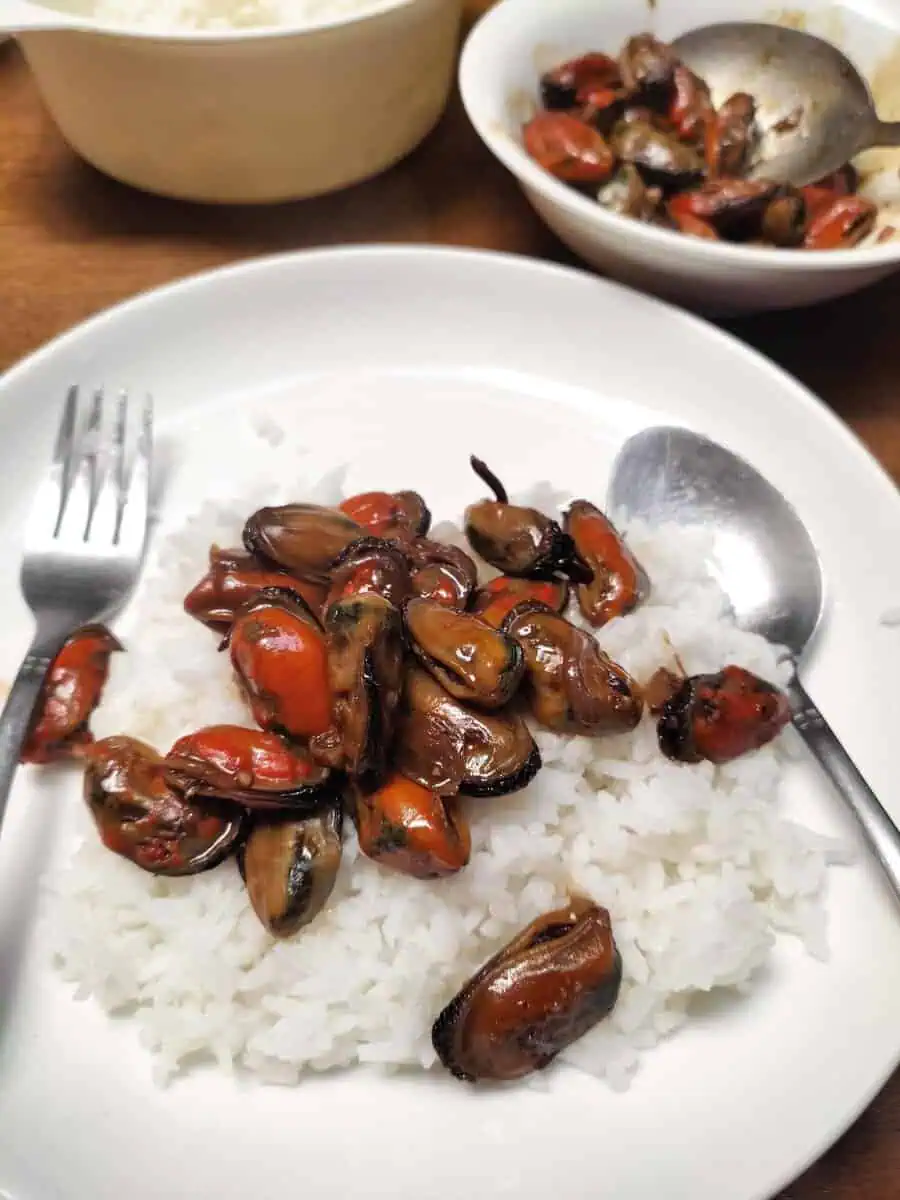
Why You'll Love This Recipe
- Quick and Easy: Ready in just 35 minutes
- Budget-Friendly: Mussels are an affordable seafood option
- Nutritious: High in protein and omega-3 fatty acids
- Versatile: Can be served for lunch or dinner
- Authentic: Traditional Filipino flavors with a modern twist
- One-Pot Meal: Minimal cleanup required
Ingredients
The ingredients in this Adobong Tahong recipe are carefully chosen to create a perfect balance of flavors. Fresh mussels provide a sweet, briny base that absorbs the bold sauce. Garlic and peppercorns add aromatic depth, while bay leaves contribute earthy notes.
The combination of soy sauce and vinegar creates the signature adobo tang-umami profile that defines Filipino cooking. Toasted garlic adds texture and intensifies the flavor, while a touch of oil helps blend everything together.
These simple ingredients showcase the Filipino cooking philosophy of transforming humble ingredients into extraordinary dishes through perfect seasoning and technique.
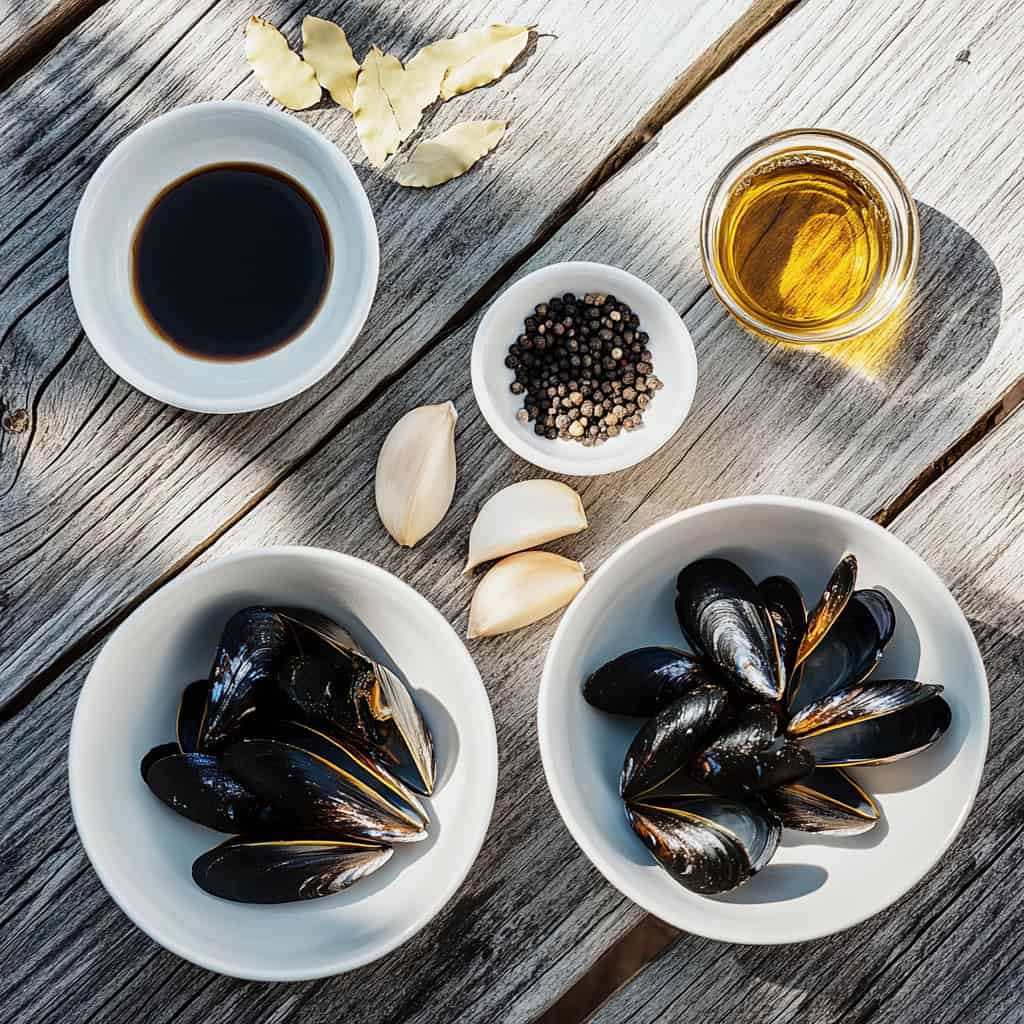
- 1 kg mussels, cleaned and shells removed
- 8 cloves garlic, crushed and divided
- 4 tablespoons soy sauce
- 3 tablespoons white vinegar
- 4 pieces dried bay leaves
- 1 tablespoon whole peppercorns
- 3 tablespoons toasted garlic
- 3 tablespoons cooking oil
- Salt to taste
Equipment
- Large pot or deep pan: For cooking the mussels with enough space to stir without spilling
- Wooden spoon: For gentle stirring without breaking the mussels
- Sharp knife: For cleaning mussels and chopping garlic
- Measuring spoons: For accurate ingredient portions
- Strainer: For thoroughly cleaning the mussels under running water
- Garlic press: Optional, for crushing garlic cloves quickly
- Small bowl: For preparing the sauce mixture

How To Make
- Thoroughly clean the mussels under cold running water. Remove any beards or debris, and discard any mussels that are already open or damaged. Crush the garlic cloves and set aside half for cooking and half for garnish.
- Heat cooking oil in a large pot over medium heat. Add the crushed garlic and whole peppercorns, cooking until the garlic turns light golden brown, about 2-3 minutes.
- Add the cleaned mussels to the pot and stir gently for 2 minutes, letting them begin to release their flavors. Add the bay leaves, soy sauce, and half of the toasted garlic. Bring everything to a boil.
- Once boiling, reduce the heat to medium-low and let it simmer for 5-7 minutes. The mussels should be opening up and cooking through at this point.
- Pour in the vinegar but do not stir right away - let it come back to a boil first. This helps develop the proper adobo flavor. Once boiling, gently stir and cook for another 3 minutes.
- Taste and add salt if needed. The mussels should now be fully cooked and tender. If using mussels in shells, they should all be open by now - discard any that remained closed.
- Transfer everything to a serving dish and top with the remaining toasted garlic. Serve hot with steamed rice, with calamansi or lemon on the side if desired.

Tips from Lola's Kitchen
- Clean just before cooking: Always clean mussels immediately before cooking, not hours ahead, to maintain freshness.
- Vinegar technique: When adding vinegar, let it boil first before stirring to achieve the authentic adobo flavor and proper acid integration.
- Use Filipino cane vinegar: For the most authentic taste, use sukang maasim (Filipino cane vinegar) instead of regular white vinegar.
- Save the mussel liquid: After cleaning mussels, save some of the liquid to add back into the dish for enhanced seafood flavor.
- Proper garlic toasting: Toast garlic until golden brown, not dark brown, to avoid bitter flavors in your dish.
- Discard unopened mussels: After cooking, any mussels that remain closed should be discarded as they may not be safe to eat.
Substitutions
- Soy sauce: Liquid aminos or coconut aminos for a gluten-free option
- White vinegar: Apple cider vinegar or cane vinegar for different flavor profiles
- Fresh mussels: Frozen mussels (properly thawed) can work in a pinch
- Bay leaves: ¼ teaspoon bay leaf powder as an alternative
- Whole peppercorns: 1 teaspoon ground black pepper can be substituted
Troubleshooting
- Mussels too tough: You've likely overcooked them. Reduce cooking time; they should be just opened.
- Sauce too salty: Add a splash of water or calamansi juice to balance the flavors.
- Sauce too sour: Balance with a pinch of sugar to round out the acidity.
- Mussels not opening: If mussels don't open during cooking, they may not be fresh. Discard for safety.
- Sauce too thin: Simply simmer for an additional 2-3 minutes uncovered to reduce and thicken.
Storage & Reheating
- Refrigeration: Store leftovers in an airtight container for up to 2 days.
- Freezing: Not recommended as mussels tend to become tough and rubbery when frozen after cooking.
- Reheating:
- Stovetop: Reheat on low heat with a splash of water to prevent drying out.
- Microwave: Heat for 1-2 minutes, covered with a damp paper towel to maintain moisture.
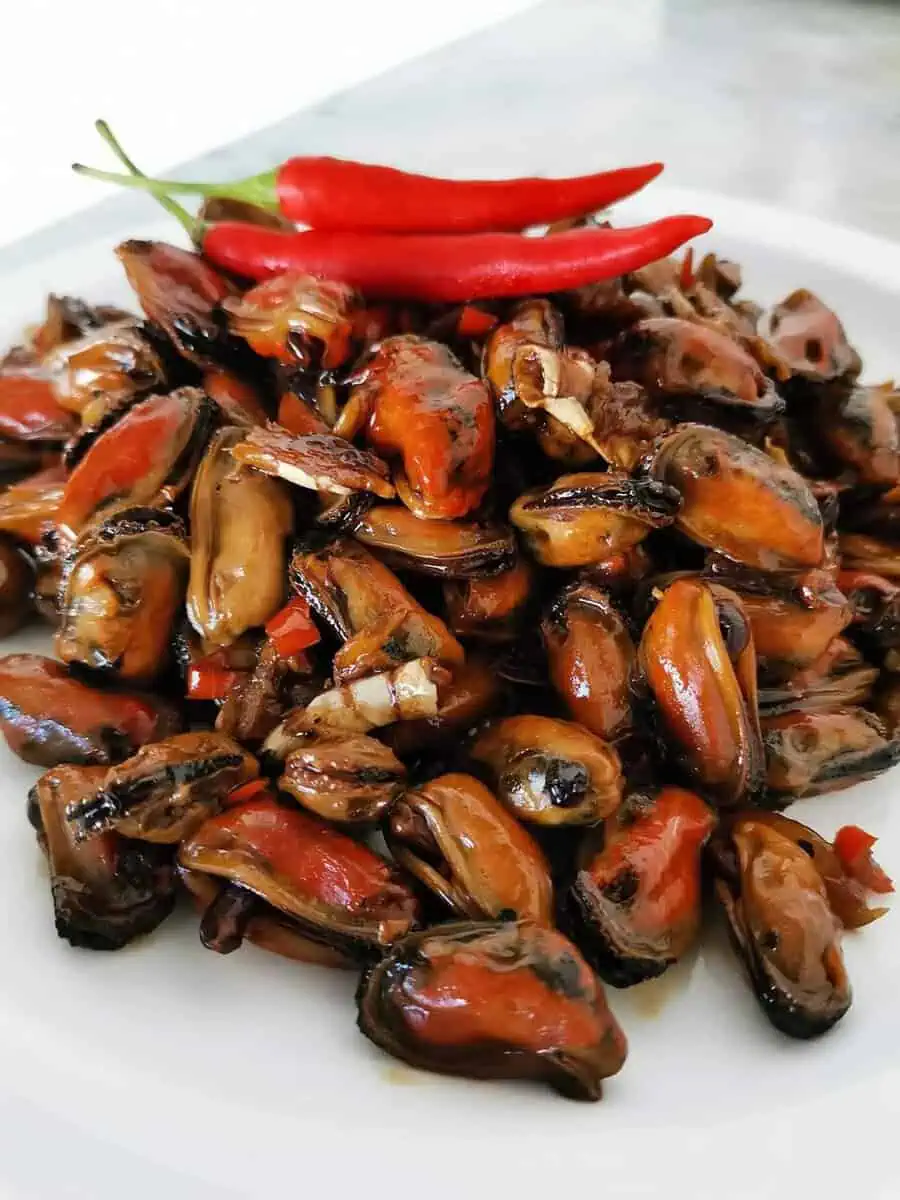
FAQ
Can I use mussels with shells on?
Yes, you can definitely cook mussels in their shells. Just ensure they're properly cleaned and increase cooking time by 2-3 minutes to allow the shells to open fully.
How do I know if mussels are fresh?
Fresh mussels should be tightly closed or close when tapped. They should smell like the ocean, not fishy. Avoid mussels with cracked shells or those that remain open when tapped.
Can I make this dish ahead of time?
Adobong Tahong is best served fresh, but you can prepare it up to 4 hours ahead and reheat gently just before serving. The flavors actually develop nicely with a little time.
What's the best vinegar to use for authentic flavor?
Filipino cane vinegar is traditional and provides the most authentic taste, but white vinegar or apple cider vinegar work well too if you can't find cane vinegar.
How can I make this dish spicy?
The basic recipe isn't spicy, but you can easily add Thai chilies, chili flakes, or a spoonful of sambal to taste. Add them during the garlic sautéing stage for best flavor integration.
Is there a way to make this recipe more creamy?
Yes! For a creamier version, add ½ cup of coconut milk at the final stage of cooking and simmer for an additional 2 minutes. This creates a rich, tropical variation called Adobong Tahong sa Gata.
What can I serve with Adobong Tahong?
Traditional accompaniments include steamed white rice, fresh calamansi on the side, spicy vinegar (suka at sili), or a fresh tomato and onion ensalada for contrast.
How do I properly clean mussels before cooking?
Rinse under cold running water, scrub the shells with a brush to remove barnacles, and pull off the "beard" (the stringy part sticking out). Discard any mussels that are already open or have cracked shells.
Related
Looking for other recipes like this? Try these:

Adobong Tahong (Filipino Mussels Adobo)
Equipment
- Large pot or deep pan (kaldero) For cooking the mussels with enough space to stir
- Wooden spoon (sandok na kahoy) For gentle stirring without breaking the mussels
- Sharp knife (matalim na kutsilyo) For cleaning mussels and chopping garlic
- Measuring spoons (panukat) For accurate ingredient portions
- Strainer [Salaan] For cleaning the mussels
- Garlic press (pangdikdik ng bawang) Optional, for crushing garlic
- Small bowl (mangkok) For preparing the sauce mixture
Ingredients
- 1 kg mussels tahong, cleaned and shells removed
- 8 cloves garlic bawang, crushed and divided
- 4 tablespoons soy sauce toyo
- 3 tablespoons white vinegar suka
- 4 pieces dried bay leaves dahon ng laurel
- 1 tablespoon whole peppercorns pamintang buo
- 3 tablespoons toasted garlic
- 3 tablespoons cooking oil mantika
- Salt asin to taste
Instructions
- Start by thoroughly cleaning the mussels under cold running water. Remove any beards or debris, and discard any mussels that are already open or damaged. Crush the garlic cloves and set aside half for cooking and half for garnish.
- Heat cooking oil in a large pot over medium heat. Add the crushed garlic and whole peppercorns, cooking until the garlic turns light golden brown, about 2-3 minutes.
- Add the cleaned mussels to the pot and stir gently for 2 minutes, letting them begin to release their flavors. Add the bay leaves, soy sauce, and half of the toasted garlic. Bring everything to a boil.
- Once boiling, reduce the heat to medium-low and let it simmer for 5-7 minutes. The mussels should be opening up and cooking through at this point.
- Pour in the vinegar but do not stir right away - let it come back to a boil first. This helps develop the proper adobo flavor. Once boiling, gently stir and cook for another 3 minutes.
- Taste and add salt if needed. The mussels should now be fully cooked and tender. If using mussels in shells, they should all be open by now - discard any that remained closed.
- Transfer everything to a serving dish and top with the remaining toasted garlic. Serve hot with steamed rice, with calamansi or lemon on the side if desired. The sauce should be perfect for spooning over rice.
Tips from Lola's Kitchen
- Always clean mussels just before cooking, not hours ahead
- When adding vinegar, let it boil first before stirring to achieve the best adobo flavor
- Use Filipino cane vinegar (sukang maasim) for authentic taste
- Save the mussel liquid after cleaning to add more seafood flavor to the dish
- Toast garlic until golden brown, not dark brown, to avoid bitter taste
Nutrition
The Story Behind Adobong Tahong
Like many beloved Filipino dishes, Adobong Tahong emerged from the ingenuity of coastal communities who masterfully combined Spanish colonial influences with local ingredients and cooking methods. While the Spanish introduced the concept of vinegar-based preservation, our ancestors along the Philippine coastline adapted this technique to their abundant seafood harvests, particularly the plentiful tahong (mussels) found in our waters.
In coastal provinces like Bataan, Cavite, and Pangasinan, where mussel farming has been a way of life for generations, Adobong Tahong became a practical solution for fishermen and their families. The dish perfectly married the preservation technique of adobo with the daily catch, creating a meal that was both delicious and could last longer in the tropical heat. The natural brine of mussels complemented the bold flavors of adobo, creating a uniquely Filipino taste that has been passed down through generations.
Today, Adobong Tahong remains a testament to Filipino resourcefulness and culinary creativity. While the original recipe likely used native vinegar made from palm or nipa sap, modern versions have adapted to include various types of vinegar and soy sauce. What hasn't changed is the dish's ability to transform humble mussels into a compelling meal that captures the essence of Filipino coastal cuisine.
In many Filipino households, especially in seaside communities, this dish is more than just sustenance – it's a celebration of our maritime heritage. The recipe has evolved from a practical preservation method to a beloved comfort food that brings together families around the dinner table. Whether served in humble carinderias along the shore or in modern Filipino restaurants in the city, Adobong Tahong continues to tell the story of our archipelagic culture and our deep connection to the sea.
Interestingly, every region has its own subtle variation of Adobong Tahong. Some coastal communities add ginger for extra warmth, while others incorporate coconut milk for richness. In Bataan, where I live, we're known for a version that perfectly balances the tangy adobo sauce with the natural sweetness of fresh mussels, often served with a side of fresh calamansi from our backyard trees.
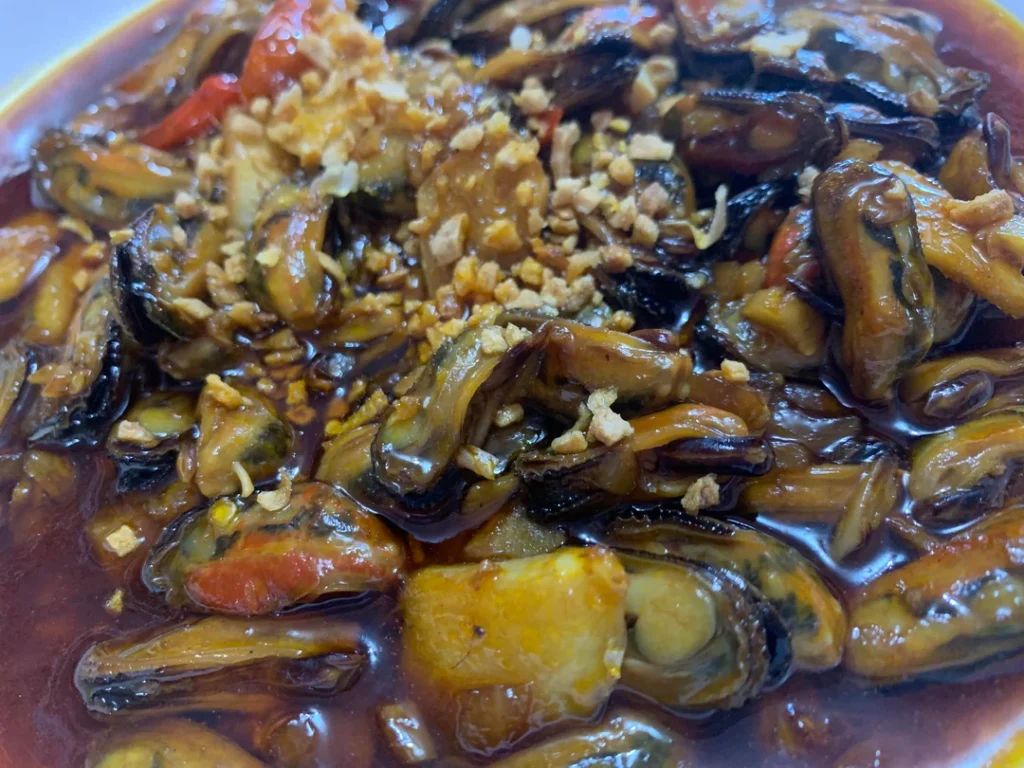


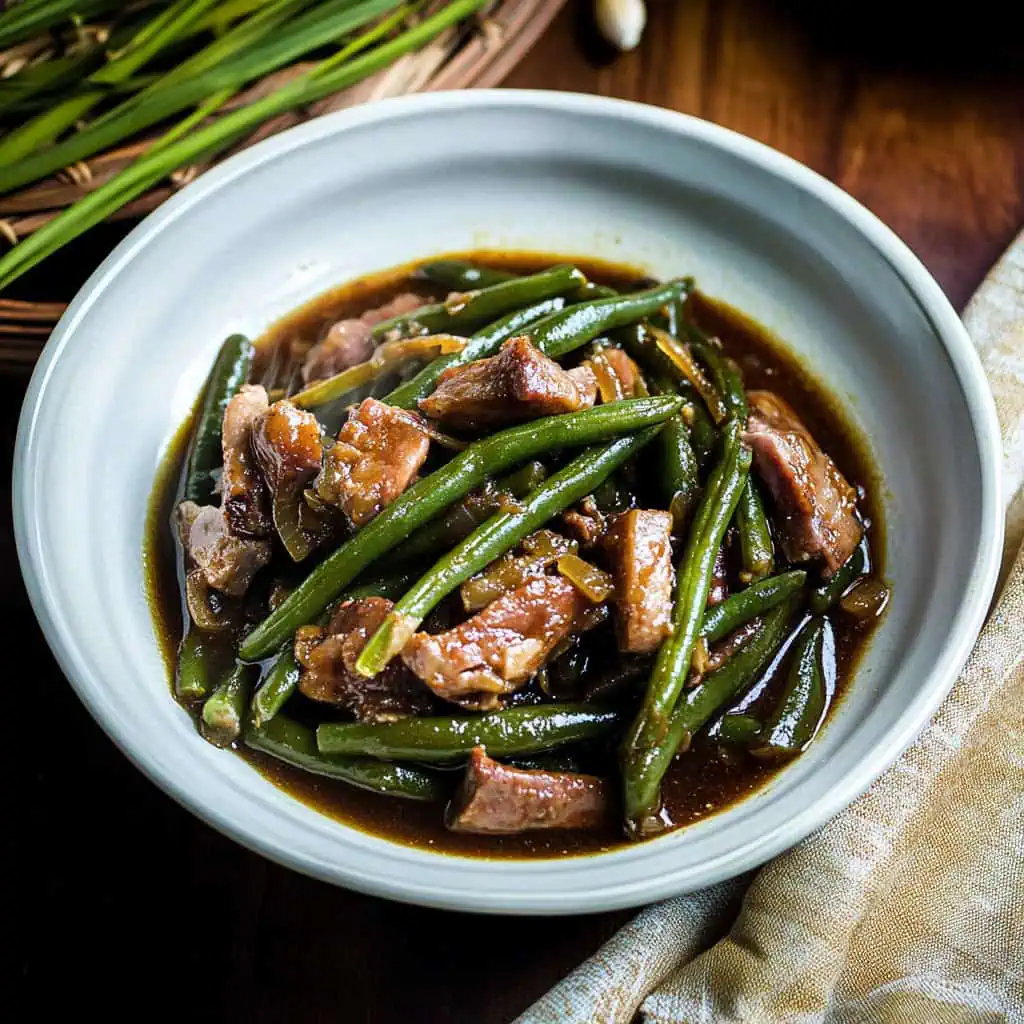

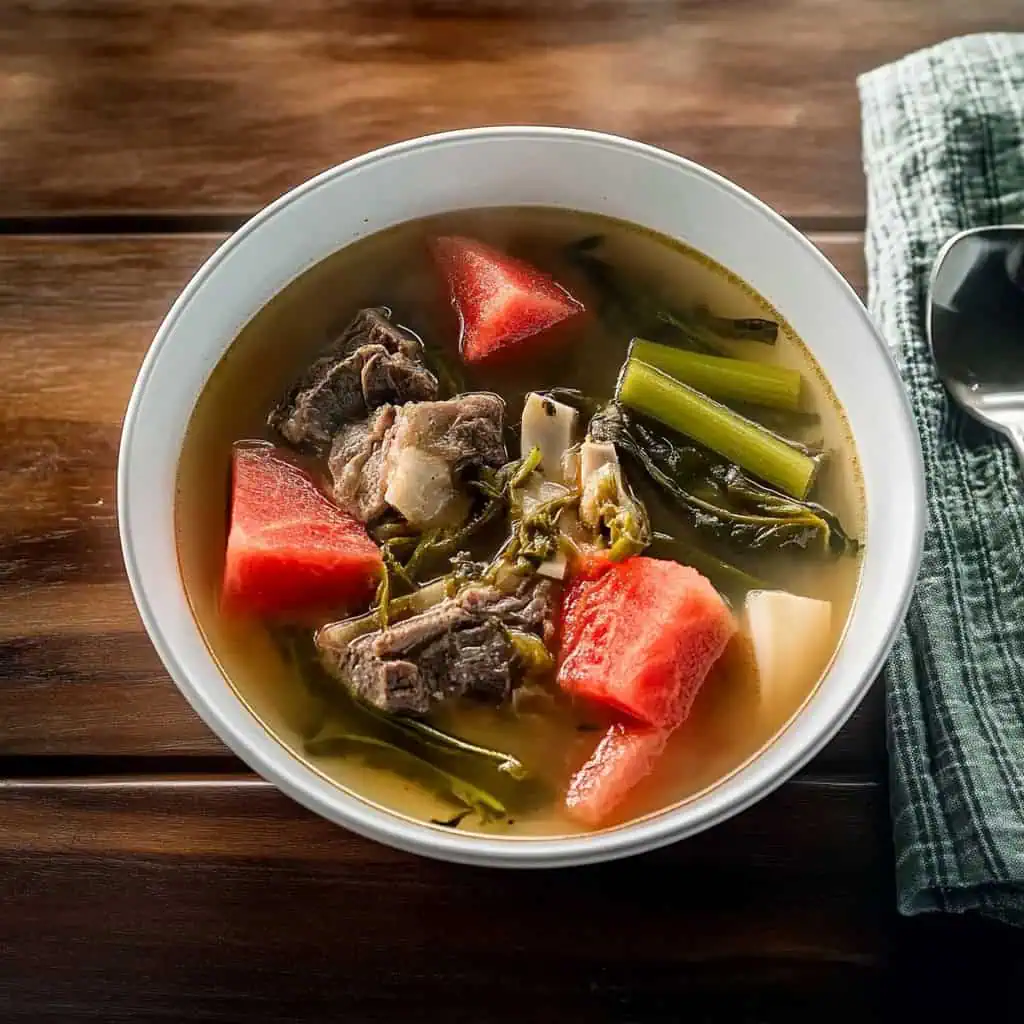




Comments
No Comments